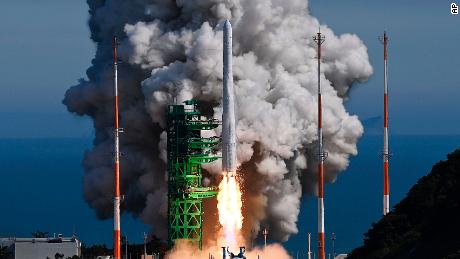South Korea launches homegrown rocket carrying satellites into orbit

The three-stage rocket, more than 47 meters (154 feet) long and weighing 200 tons, was launched from the Naro Space Center in the country’s southern coastal region at 4 p.m. local time. It was topped with five satellites that will carry out Earth observation missions, such as monitoring the atmosphere, for up to two years, as well as a 1.3-ton dummy satellite, according to the country’s Science Ministry.”The road from South Korea to space has opened now,” said President Yoon Suk Yeol after the launch. “It’s the fruit of the difficult challenges of the past 30 years. Now, our Korean people and our young people’s dream and hope will reach toward space.”Prior to South Korea’s mission on Tuesday, only Russia, the United States, the European Union, China, Japan and India had developed a space launch vehicle capable of carrying a satellite weighing more than 1 ton, according to the Korea Aerospace Research Institute (KARI).South Korea first tried to launch a dummy satellite with the Nuri rocket last October. The attempt failed when the rocket’s third-stage engine shut down and the dummy satellite failed to reach low Earth orbit.Burgeoning space industrySouth Korea has struggled to keep up with its Asian neighbors in the A total of 300 South Korean companies took part in developing the rocket, according to KARI. KARI head Ahn Sang-il has previously said the rocket’s success would allow South Korea more autonomy in its space program.”In the past, cube satellites were launched using rockets in other countries but from this launch, we’ll have an opportunity to load Korean-made cube satellites to a rocket also made in Korea,” he told a news briefing in April. “We can have our satellites launched according to our own needs and at the right timing for us from this launch.”After the failed attempt last year, then President Moon Jae-in said South Korea planned to launch the rocket five more times by 2027.The country has other space projects in the works: its first lunar orbiter, developed in partnership with NASA, is expected to launch in August next year. It will orbit the moon for about a year, marking the first South Korean mission to travel beyond Earth’s orbit.





